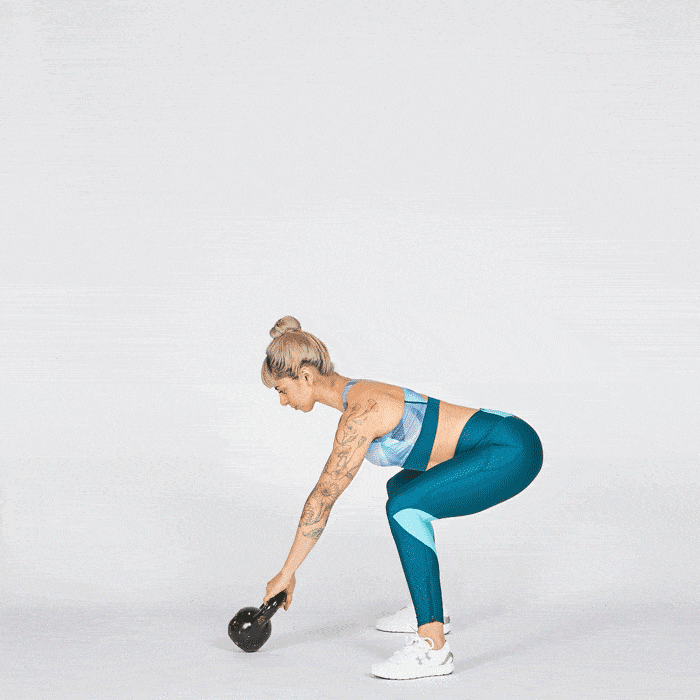Using kettlebells is a one-way ticket to feeling like a superhero in the gym. Kettlebell swings are the building blocks of a legit workout. They’re also pretty easy to do incorrectly.
“Kettlebell swings are a great movement because they develop strength and power in your posterior chain (glutes and hamstrings) and also train your core,” says Tim Liu, a certified strength and conditioning specialist. “They work your muscular endurance and elevate your heart rate, so you get a cardiovascular workout effect from them, too.”
The 2-for-1 benefits of the move require some mastery to truly reap, though. “To perform the movement correctly, you must be able to engage and control multiple muscles at the same time,” says Jackie Wilson, a certified personal trainer and founder of NOVA Fitness Studios. The result: Many gym-goers — especially beginners — get them wrong.
The next time you want to get your burn on with a bell, avoid these common kettlebell swing mistakes.

“The kettlebell swing is a hip-hinge movement,” says Liu. “However, many people perform it as a squat and front raise, which doesn’t target the right muscles.”
Basically, instead of swinging from the hips like a pendulum, many people squat straight down and then rely too much on their upper body to lift the kettlebell forward and up. The result: You miss out on the glute and hamstring benefits the move should offer, says Liu.
To properly engage your glutes and hamstrings, Liu recommends focusing on shifting your hips back at the beginning of the movement and popping them forward to carry the kettlebell forward and up.

Another common kettlebell swing mistake is rounding your upper back and cranking your neck out of alignment, which can increase your risk of injury, Liu says.
“To fix, keep your chest proud and your chin slightly tucked,” he says. “This will help you maintain proper alignment during the entire movement.”

Rounding the upper back isn’t the only back-related mistake exercisers make during kettlebell swings. “Another common mistake trainees make is using their lower back to complete swings,” says Liu. This takes the emphasis off your glutes and hamstrings while overworking your lower back, decreasing the effectiveness of the move and increasing your risk of injury.
To keep your lower back safe, activate your core and glutes throughout your swing and finish the movement standing tall with your glutes squeezed, Liu advises.

Many kettlebell swingers also put their back at risk by leaning too far back and pushing their hips too far forward at the top of the movement, says Wilson. This also strains the lower back and increases injury risk.
In the correct ending position of a kettlebell swing, you stand with your hips directly beneath your shoulders with a neutral spine (meaning no rounding in your upper back or overarching in your lower back), Wilson explains.
“Finish the movement standing upright with your core engaged, knees locked, and glutes squeezed,” he says.
PERFECTING YOUR KETTLEBELL SWING FORM

To strengthen your kettlebell swing form, Liu recommends practicing another exercise: the Romanian deadlift, which also develops the hip-hinge movement.

To do a Romanian deadlift, stand holding a pair of dumbbells at your sides. Keep your knees ever-so-slightly bent and push your hips back as far as you can while keeping your spine neutral, Liu says. Once you feel a stretch in your hamstrings, push your hips forward and squeeze your glutes to come back to a standing position.
This movement strengthens your posterior chain, which powers the kettlebell swing.
For more inspiration, check out “Workout Routines” in the app to discover and log a wide variety of routines. Or build your own routine with exercises that fit your goals.




